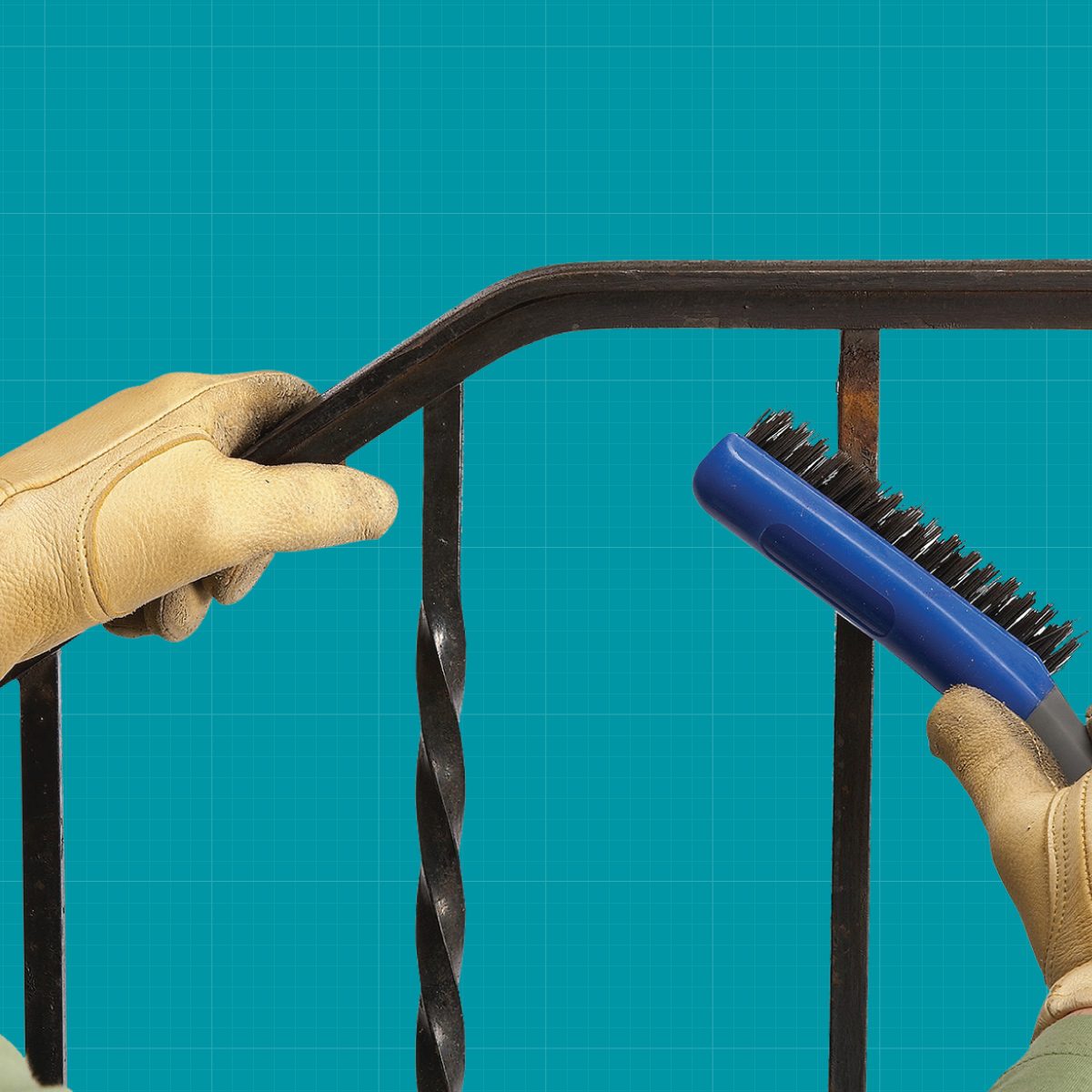If you want to paint that rusty metal to make it look new again, you have to remove the rust first. Here's how.
Our editors and experts handpick every product we feature. We may earn a commission from your purchases.Learn more.


If you want to paint that rusty metal to make it look new again, you have to remove the rust first. Here's how.
Our editors and experts handpick every product we feature. We may earn a commission from your purchases.Learn more.
It won't come as a shock to hear that, before you paint rusted metal, you have to remove the rust. Anyone who has ever touched up the paint on an old car or repainted a metal fence knows this. Rust is a product of the reaction of iron with oxygen and moisture, and if you simply paint over it, you'll lock in the oxygen and moisture, the reaction will continue, and the rust will spread.
As a (retired) professional painter, I'm a fan of brush-on rust converters that turn rust into a non-reactive barrier that actually blocks rust, but you don't always need one. Brushing or sanding off the rust and applying a rust-blocking primer can work just as well in the right circumstances.
Techniques for prepping rusted metal for painting are pretty straightforward, and you'll be happy you know them if you live near the ocean, where the air is salty. When salt dissolves in water, the result is an electrolyte that makes rust form even faster that it would otherwise. Salt is a big problem for drivers who live in communities that salt their roads in the winter.
If you have to paint over rusty metal, the prepping techniques described in this post will help you do a bang-up job.
When metal rusts, you’ll find loose iron oxide flakes on the surface. The first thing you need to do is remove these, and it’s usually fairly easy.
Start by brushing off the flakes with a wire brush. You don’t need to get down to bare, shiny metal—just clean off the flakes and powdery surface rust. In the next steps, you’ll get to the deeper rust.

If you’re dealing with heavy rust or removing rust from crevices where a wire brush can’t reach, put a wire wheel on your power drill and attack the rust with that. For really small spots, a rotary tool with a mini-wire wheel might work better. On the other hand, you might need the extra power of an angle grinder for large, heavily rusted areas.

Some painters might consider this an optional step. Still, because a rust dissolver neutralizes rust and prevents it from spreading, I recommend using one every time, especially if the rust has created pockmarks or holes. Most rust dissolvers contain phosphoric or hydrochloric acid, and you spray them or apply them with a paintbrush, following the instructions on the container. Once the product dries, you can remove the residue by brushing or sanding.

Now that you’ve brushed and dissolved the rust, fill the pock-marks and holes with a two-part epoxy or fiberglass filler, such as Bondo auto body filler. Let the filler set, then sand it flat with a detail sander and 100-grit sanding pad. While you’re at it, sand all the other areas you treated for rust to smooth them out and prepare them for painting.

Any spots you’ve sanded down to the bare metal must be primed before you paint over them. This guarantees proper paint adhesion and is insurance against the formation of more rust, especially if you use a rust-inhibiting primer.
Apply the primer with a brush or spray it from a can. Don’t limit the primer to bare metal only; any areas that are rusty will benefit. You can often get by without scuffing the primer, but it doesn’t hurt to do it anyway, as scuffing creates a smoother surface for painting. Use 220-grit sandpaper and scuff by hand — not with a machine. After that, you’re ready to paint. Here is also how to repair rust on a car.
